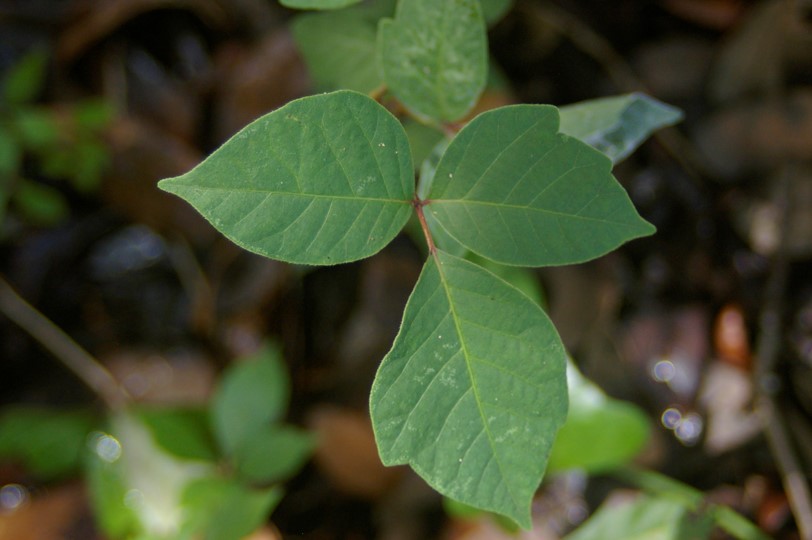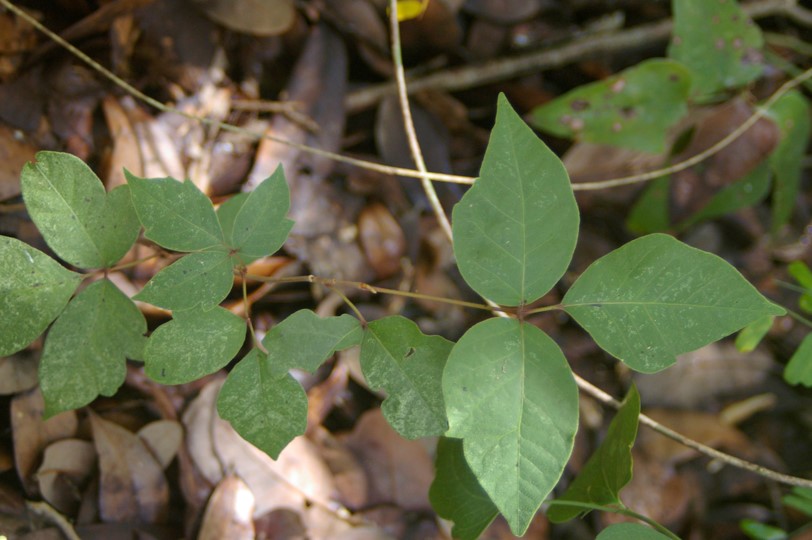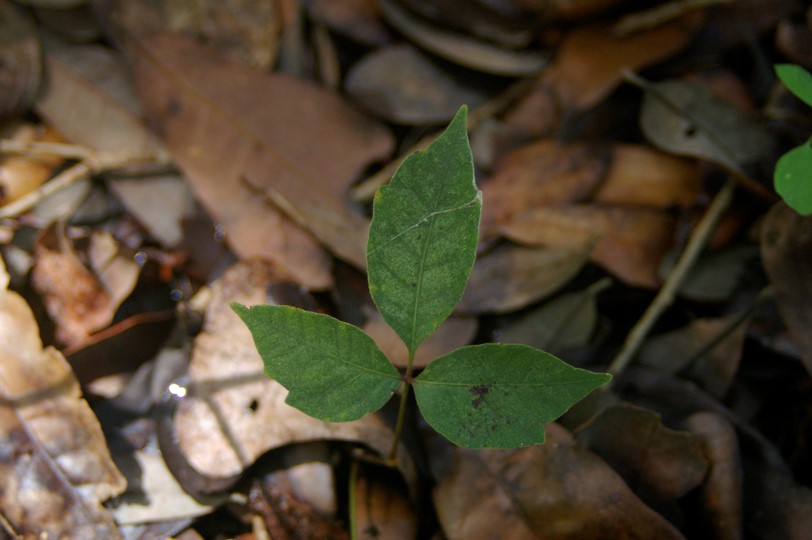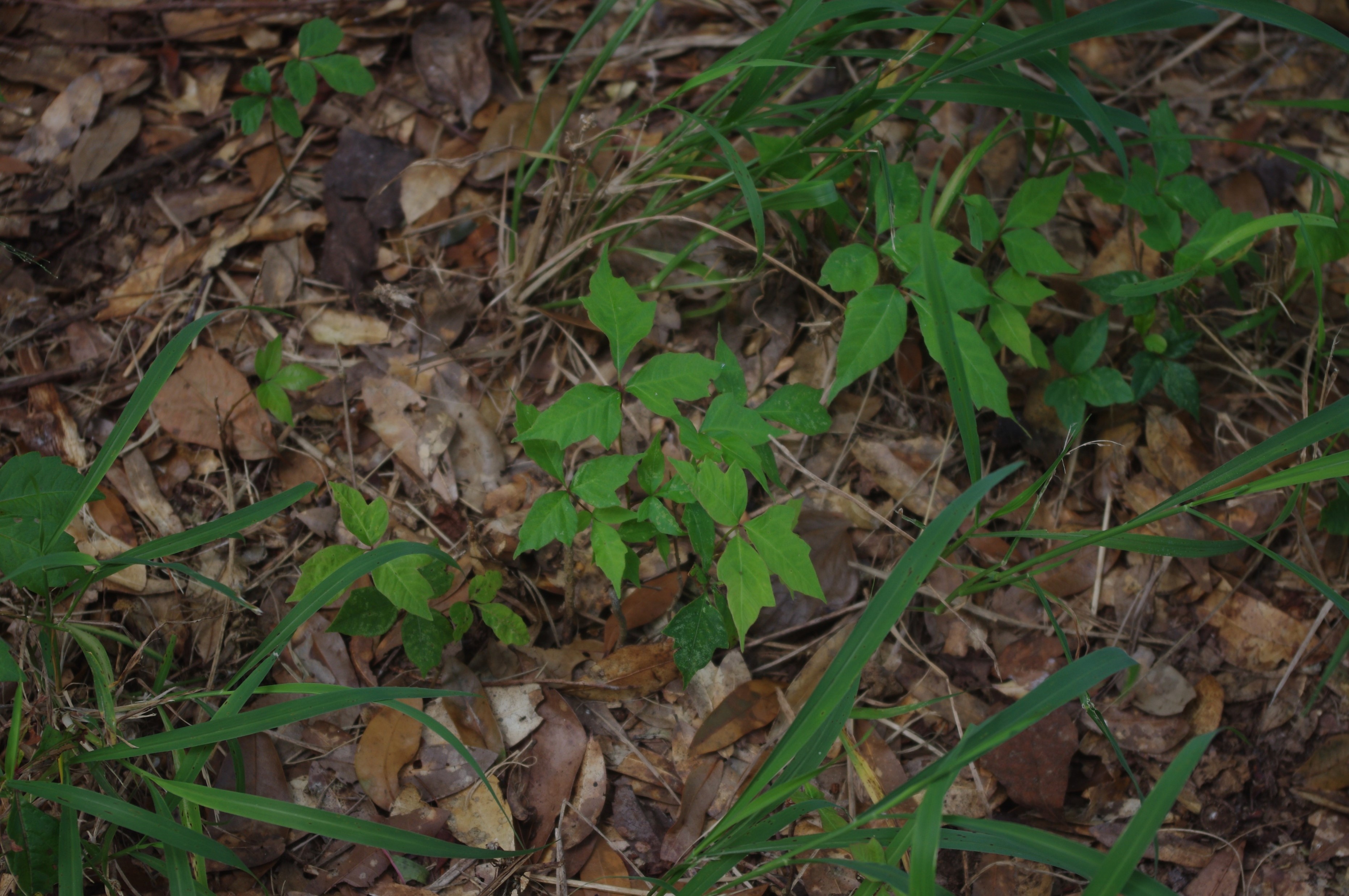Toxicodendron radicans
Poison ivy (Toxicodendron radicans) is an allergenic plant of the cashew family native to North America. Poison ivy earns its name from urushiol, an oily resin found in both the leaves and stems of the plant. Touching any part of the poison ivy plant can result in red, swollen skin, blisters, and severe itching within hours of contact. Poison ivy is often found in fields, pastures, farms, home landscapes and woodland areas climbing along fences, buildings, trees, or other structures.
- Scientific Name: Toxicodendron radicans
- Common Name: Poison ivy
- Seasonality: Year-round
- Soil Type: Moist, well-drained soil
- Toxicity: Highly toxic, causes skin irritation upon contact
- Plant Growth: Annual
- Management Recommendations: Hand-pull seedlings while wearing protective clothing. Once established, poison ivy can be hard to eradicate by hand, as it’s vine and root system will continue to produce plants unless fully removed. The most common herbicide used to control poison ivy in the landscape is glyphosate.
- Biology and Management of Poison Ivy (Toxicodendron radicans) in the Home Landscape
- Identification of Poison Ivy, Poison Oak, Poison Sumac, and Poisonwood





